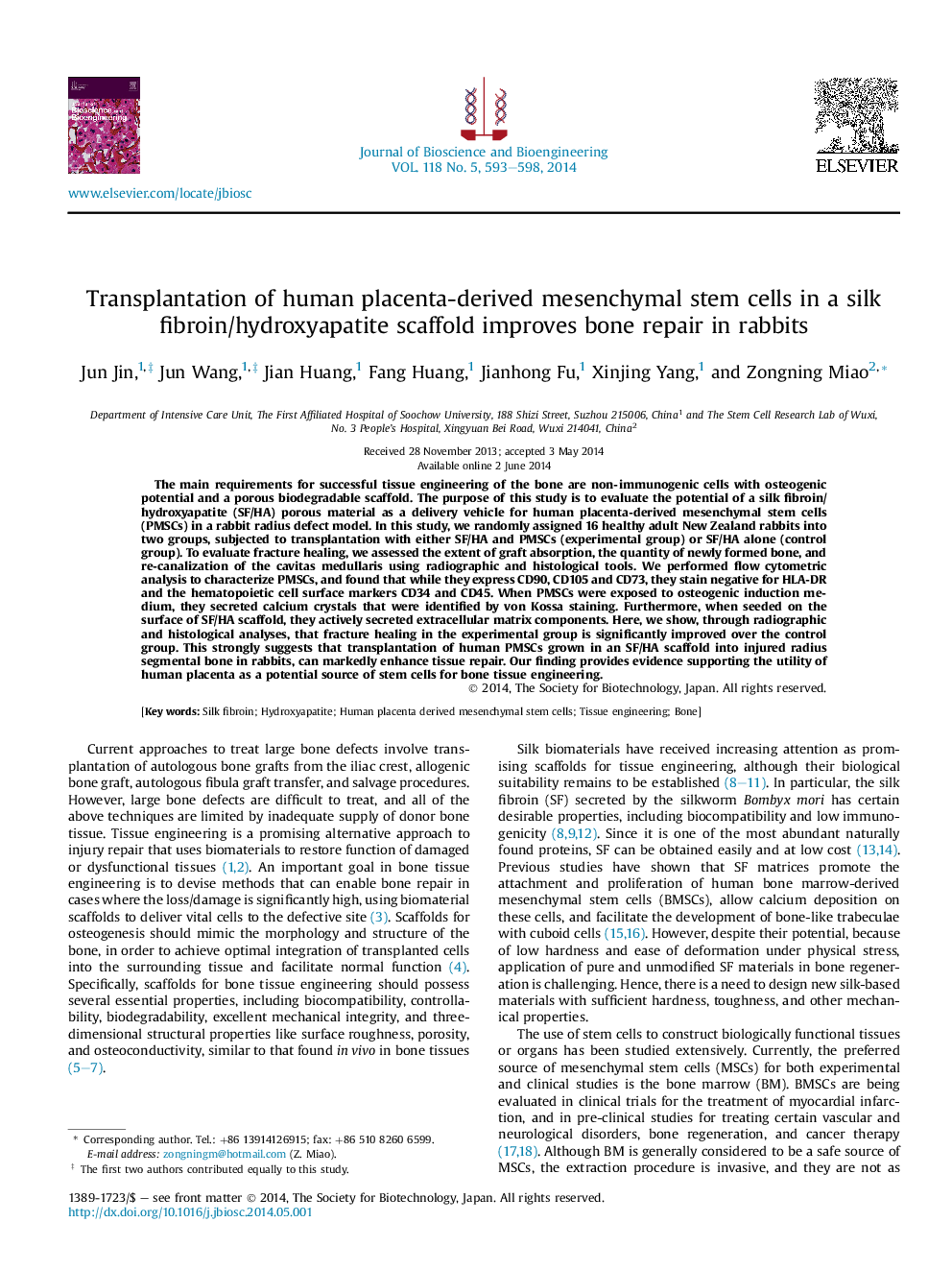| Article ID | Journal | Published Year | Pages | File Type |
|---|---|---|---|---|
| 20396 | Journal of Bioscience and Bioengineering | 2014 | 6 Pages |
The main requirements for successful tissue engineering of the bone are non-immunogenic cells with osteogenic potential and a porous biodegradable scaffold. The purpose of this study is to evaluate the potential of a silk fibroin/hydroxyapatite (SF/HA) porous material as a delivery vehicle for human placenta-derived mesenchymal stem cells (PMSCs) in a rabbit radius defect model. In this study, we randomly assigned 16 healthy adult New Zealand rabbits into two groups, subjected to transplantation with either SF/HA and PMSCs (experimental group) or SF/HA alone (control group). To evaluate fracture healing, we assessed the extent of graft absorption, the quantity of newly formed bone, and re-canalization of the cavitas medullaris using radiographic and histological tools. We performed flow cytometric analysis to characterize PMSCs, and found that while they express CD90, CD105 and CD73, they stain negative for HLA-DR and the hematopoietic cell surface markers CD34 and CD45. When PMSCs were exposed to osteogenic induction medium, they secreted calcium crystals that were identified by von Kossa staining. Furthermore, when seeded on the surface of SF/HA scaffold, they actively secreted extracellular matrix components. Here, we show, through radiographic and histological analyses, that fracture healing in the experimental group is significantly improved over the control group. This strongly suggests that transplantation of human PMSCs grown in an SF/HA scaffold into injured radius segmental bone in rabbits, can markedly enhance tissue repair. Our finding provides evidence supporting the utility of human placenta as a potential source of stem cells for bone tissue engineering.
